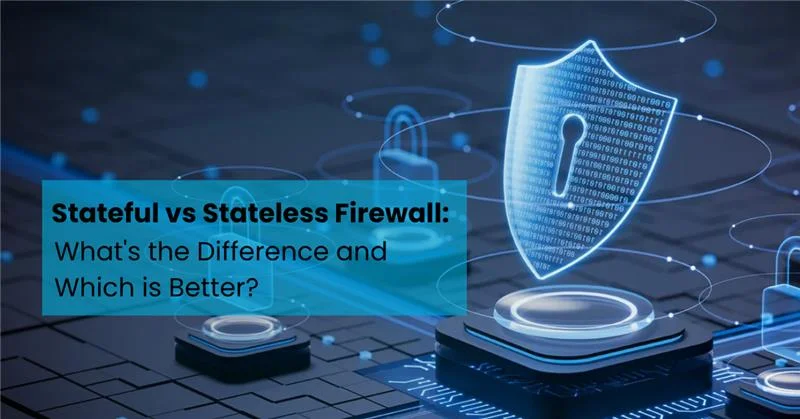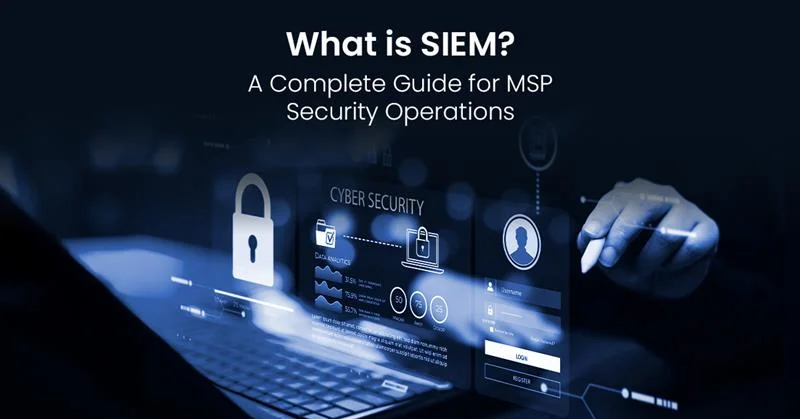Choosing between stateful vs stateless firewall technologies is one of the most important network security decisions you’ll make. These two firewall types handle network traffic differently, and understanding their differences directly impacts your organization’s security posture and performance.
Stateful vs stateless firewall systems operate on fundamentally different principles. Stateful firewalls remember connection details and track network conversations, while stateless firewalls examine each packet independently without maintaining connection history.
With data breach costs reaching $4.88 million in 2024, selecting the right firewall type isn’t just a technical choice—it’s a business-critical decision. The stateful vs stateless firewall debate affects everything from security effectiveness to network performance and operational costs.
Let’s examine what makes each firewall type work and help you determine which approach best fits your network security requirements.
What is a stateful inspection firewall?
Think of a stateful inspection firewall as your network’s memory keeper. Unlike its stateless counterpart, this intelligent guardian doesn’t just look at individual packets—it remembers entire conversations between your network and the outside world.
A stateful inspection firewall maintains detailed records of active connections through something called a “state table.” This table tracks every connection from start to finish, remembering who initiated the conversation, what data was exchanged, and whether the connection is legitimate. When discussing stateful vs stateless firewall capabilities, this connection awareness gives stateful firewalls a significant security advantage.
How does stateful packet filtering work?
Stateful packet filtering operates like a sophisticated bouncer with an excellent memory. Here’s the process:
- Connection Tracking: When a connection starts, the firewall creates an entry in its state table
- Dynamic Rule Creation: It automatically allows return traffic for established connections
- Context Awareness: Every packet is evaluated against the connection’s history
- Memory Management: The firewall maintains this information throughout the connection’s lifetime
The beauty of stateful packet filtering lies in its ability to understand context. If your internal server requests data from an external website, the stateful firewall remembers this request and automatically allows the response back through—no manual rules needed for return traffic.
What is a stateless firewall?
Now, let’s talk about the stateless firewall—the network security world’s rule-following perfectionist. A stateless firewall examines each packet independently, like a security guard who checks every ID but never remembers faces.
Stateless firewalls operate on predefined rules, making decisions based solely on packet headers—source IP, destination IP, port numbers, and protocols. They don’t maintain connection state information, which is the fundamental difference between stateful and stateless firewall technologies.
Key characteristics of stateless filtering
Stateless filtering brings simplicity to network security:
- Individual Packet Analysis: Each packet is treated as a standalone entity
- Pre-configured Rule Sets: Administrators must manually define all allowed traffic patterns
- No Connection Memory: The firewall doesn’t remember previous packets or connections
- Lightning-Fast Processing: Without state tables to consult, decisions happen instantly
While stateless firewalls might seem basic, they’re incredibly fast and reliable for straightforward network environments. The difference between stateful and stateless firewall performance becomes evident in high-throughput scenarios where speed matters more than sophisticated threat detection.
Difference between stateful and stateless firewall
Let’s dive deep into what sets these two security approaches apart. Understanding the difference between stateful and stateless firewall technologies will help you choose the right protection for your network.
Security capabilities comparison
The security difference between stateful and stateless firewall systems is substantial:
Stateful Firewalls
- Detect connection hijacking attempts
- Prevent TCP sequence attacks
- Block unsolicited inbound connections
- Identify suspicious connection patterns
Stateless Firewalls:
- Filter based on basic packet attributes
- Block traffic from specific IP addresses
- Control access by port and protocol
- Provide fast, rule-based filtering
Modern firewall testing shows that advanced systems can achieve 99.90% security effectiveness, with stateful firewalls typically scoring higher due to their context-awareness capabilities.
Performance and speed differences
When examining the difference between stateful and stateless firewall performance:
Speed Factors:
- Stateless firewalls process packets 2x to 3x faster than stateful ones
- No state table lookups mean reduced processing overhead
- Linear rule processing vs. complex connection tracking
- Memory usage differences can impact large-scale deployments
Throughput Considerations:
- Stateless: Excellent for high-bandwidth, low-security requirements
- Stateful: Better for security-focused environments where slight latency is acceptable
Resource requirements
The resource difference between stateful and stateless firewall systems affects your infrastructure planning:
Memory Usage:
- Stateful firewalls require RAM for state tables (can be substantial with thousands of connections)
- Stateless firewalls use minimal memory for rule storage
CPU Utilization:
- Stateful processing requires more computational power
- Stateless filtering uses basic comparison operations
Stateful vs stateless firewall: Pros and cons
Let’s break down the advantages and limitations of each approach in the stateful vs stateless firewall debate.
State-based firewall advantages
A state-based firewall brings several compelling benefits:
- Enhanced Security: Connection tracking prevents many attack vectors that fool stateless systems
- Automatic Rule Management: Return traffic is automatically permitted for established connections
- Advanced Threat Detection: Can identify various types of cyber attacks including port scanning, denial-of-service attempts, and connection floods
- Simplified Administration: Fewer manual rules needed thanks to dynamic connection handling
The intelligence of a state-based firewall shines in complex network environments where understanding connection context is crucial for security.
Stateless firewall benefits
Don’t underestimate the power of simplicity in the stateful vs stateless firewall comparison:
- Blazing Speed: No state table lookups mean lightning-fast packet processing
- Lower Resource Consumption: Minimal memory and CPU requirements
- Predictable Behavior: Rule-based operation makes troubleshooting straightforward
- Cost-Effective: Less expensive hardware requirements for implementation
Limitations of each approach
Stateful Firewall Limitations:
- Higher resource consumption
- More complex configuration and management
- Potential single point of failure if state table becomes corrupted
- Slower packet processing speeds
Stateless Firewall Limitations:
- Cannot prevent connection-based attacks
- Requires manual rules for bidirectional communication
- Limited context awareness creates security gaps
- More administrative overhead for complex rules
Stateful vs Stateless: Which firewall you should choose?
The stateful vs stateless firewall decision isn’t one-size-fits-all. Your choice depends on specific business requirements, security needs, and performance expectations.
When to use stateful inspection firewall
A stateful inspection firewall is your best bet when:
- Enterprise Environments: Large organizations with complex network architectures
- High-Security Requirements: Financial institutions, healthcare, government agencies
- Dynamic Applications: Web servers, email systems, and database applications
- Regulatory Compliance: Industries requiring detailed connection logging and monitoring
With over 22,254 vulnerabilities reported in 2024 alone, enterprises need the advanced protection that stateful inspection provides.
When stateless firewalls make sense
Choose stateless firewalls for:
- Simple Network Setups: Small businesses with straightforward connectivity needs
- Performance-Critical Applications: Real-time systems where latency matters
- Budget-Conscious Implementations: Organizations with limited security budgets
- High-Throughput Requirements: Network segments handling massive data volumes
Conclusion
The stateful vs stateless firewall choice depends on your security needs and performance requirements. Stateful inspection firewalls suit complex environments, while stateless options work best for high-performance scenarios.
Implementing either solution requires expertise most organizations lack. IT By Design’s SOC services handle the complexity with 24/7 monitoring and expert configuration for both state-based firewall types.
Ready to secure your network?
Contact IT By Design today for expert firewall management that eliminates the guesswork.
Frequently asked questions (FAQs)
Q: Can a stateful firewall do everything a stateless firewall can?
A: Yes, stateful firewalls can perform all stateless functions plus provide additional context-aware filtering capabilities.
Q: Why are stateless firewalls faster than stateful ones?
A: They process packets individually without maintaining connection state tables, eliminating lookup overhead.
Q: Which is more secure: stateful or stateless firewall?
A: Stateful firewalls provide better security through connection tracking and context awareness.
Q: Do I need both types of firewalls?
A: Some organizations use hybrid approaches, deploying each type where it provides the best security-performance balance.
Q: What’s the main difference between stateful and stateless firewall costs?
A: Stateful firewalls typically cost more due to higher hardware requirements and complex management needs.
Q: How does stateful packet filtering impact network performance?
A: It adds some latency due to state table processing, but modern hardware minimizes this impact significantly.








